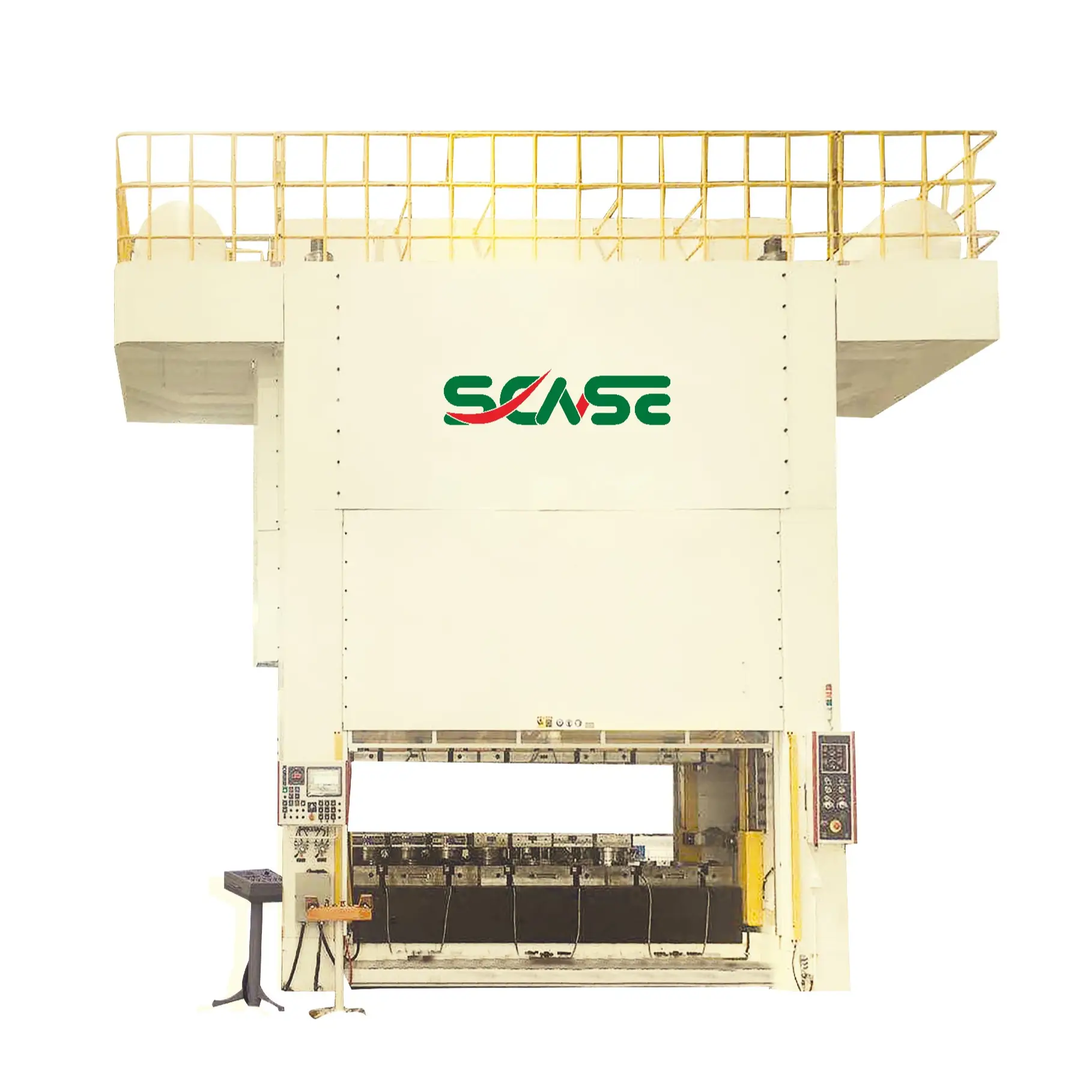How to Maximize the Efficiency of Crank Presses in Your Shop
Optimizing the performance of crank presses involves a multi-faceted approach to enhance efficiency and minimize downtime. Key strategies include streamlining setup processes, adopting standardization of tooling, and utilizing quick-change mechanisms to expedite die changes. Investing in automated material handling systems further reduces setup times and minimizes human error. Regular maintenance, encompassing tasks such as lubrication, inspection, and component replacement, is essential for prolonging the machine's lifespan and preventing unexpected breakdowns. Advanced technologies, such as IoT sensors and predictive maintenance software, provide real-time monitoring and alerts, reducing downtime and optimizing performance. Lean manufacturing principles, including 5S and value stream mapping, help identify and eliminate waste in the workflow. Energy-efficient designs and modular components reduce energy use and simplify maintenance. By integrating these techniques, manufacturers can achieve continuous improvement and enhanced operational efficiency.
Tools and Strategies for Enhancing Production Workflow
Tools and strategies for enhancing the production workflow in crank presses focus on optimizing each stage of the process. Upgrading to newer, more precise dies significantly improves efficiency and part quality. Fine-tuning press speeds and implementing synchronized loading and unloading stations reduce cycle times without compromising safety. Predictive maintenance and real-time monitoring, supported by condition-based monitoring software, enhance uptime and efficiency by proactively addressing maintenance needs. Automation, including the use of robotic arms for synchronized loading and unloading, boosts throughput. Integrating advanced analytics and real-time quality checks with supply chain management software ensures consistent part quality and reduces waste. A comprehensive approach combining predictive maintenance, automation, and real-time analytics optimizes production and enhances supply chain reliability, leading to improved order fulfillment rates and customer satisfaction.

Common Issues and Preventive Measures in Crank Presses
Common issues in crank presses include wear on pistons, hydraulic leaks, and misalignment of press arms. Regular maintenance, including lubrication of pistons and inspection of seals, prevents hydraulic leaks. Ensuring correct alignment of press arms significantly extends equipment lifespan. Preventive measures such as establishing a routine maintenance schedule and using high-quality components are crucial. These strategies maintain optimal performance and reduce downtime and associated costs.
Best Practices for Crank Presses Maintenance & Performance
To maximize the efficiency of crank presses, several best practices should be implemented. Regular maintenance, such as lubrication and alignment checks, prevents premature wear and reduces vibration. A predictive maintenance plan, monitoring key performance indicators like press cycles, vibration levels, and heat signatures, anticipates issues before they lead to failures. Maintaining consistent workshop temperatures reduces mechanical stress. Optimizing the shop layout and energy-efficient motors enhance performance and reduce operational costs. Integrating smart technologies like IoT sensors and data analytics for real-time monitoring and predictive maintenance provides valuable insights. Customized maintenance schedules and cross-training maintenance personnel reduce downtime. Ensuring safety through regular drills, hazard assessments, and safety interlocks is a critical part of maintenance and operational practices. Quality control measures, such as statistical process control and automated inspection systems, maintain consistent product quality and press reliability.
Latest Advancements in Crank Presses Technology
Recent advancements in crank press technology have greatly enhanced operational efficiency and production capabilities. Innovations like variable frequency drives (VFDs) and advanced control algorithms optimize press operations, improving precision and reducing energy consumption. These technologies achieve higher throughput and minimize scrap rates, contributing to a more sustainable and cost-effective manufacturing environment. The integration of these advanced control systems requires meticulous planning and specialized training, but the long-term benefits in terms of increased productivity and reduced downtime justify these investments. Industries such as automotive and metalworking are leveraging these advancements to optimize operations, with case studies showcasing substantial improvements in both efficiency and environmental performance.
FAQs Related to Crank Press Optimization and Maintenance
What are some key optimization techniques for maximizing the efficiency of crank presses in a shop?
Key optimization techniques include streamlining setup processes, adopting standardization of tooling, utilizing quick-change mechanisms, investing in automated material handling systems, and performing regular maintenance tasks such as lubrication, inspection, and component replacement. Advanced technologies like IoT sensors and predictive maintenance software also contribute to continuous improvement and enhanced operational efficiency.What tools and strategies can be used to enhance the production workflow in crank presses?
Tools and strategies for enhancing the production workflow include upgrading to newer, more precise dies, fine-tuning press speeds, implementing synchronized loading and unloading stations, integrating predictive maintenance and real-time monitoring, using automation such as robotic arms, and integrating advanced analytics and real-time quality checks with supply chain management software.What are some common issues in crank presses and how can they be prevented?
Common issues include wear on pistons, hydraulic leaks, and misalignment of press arms. Preventive measures such as regular maintenance, including lubrication of pistons and inspection of seals, ensuring correct alignment, and using high-quality components can help prevent these issues and maintain optimal performance and reduce downtime and associated costs.What are some best practices for maintaining and performing well in crank presses?
Best practices include regular lubrication and alignment checks, establishing a routine maintenance schedule, using predictive maintenance that monitors key performance indicators, maintaining consistent workshop temperatures, optimizing the shop layout, integrating smart technologies, and ensuring safety through regular drills and hazard assessments.What are the latest advancements in crank press technology that can enhance operational efficiency and production capabilities?
Recent advancements include the use of variable frequency drives (VFDs) and advanced control algorithms, which optimize press operations, improve precision, and reduce energy consumption. These technologies help achieve higher throughput and minimize scrap rates, contributing to a more sustainable and cost-effective manufacturing environment.





